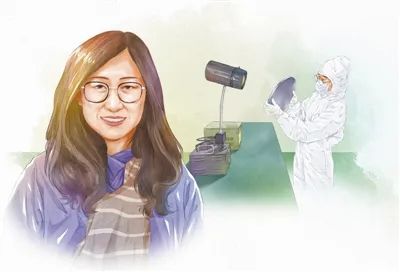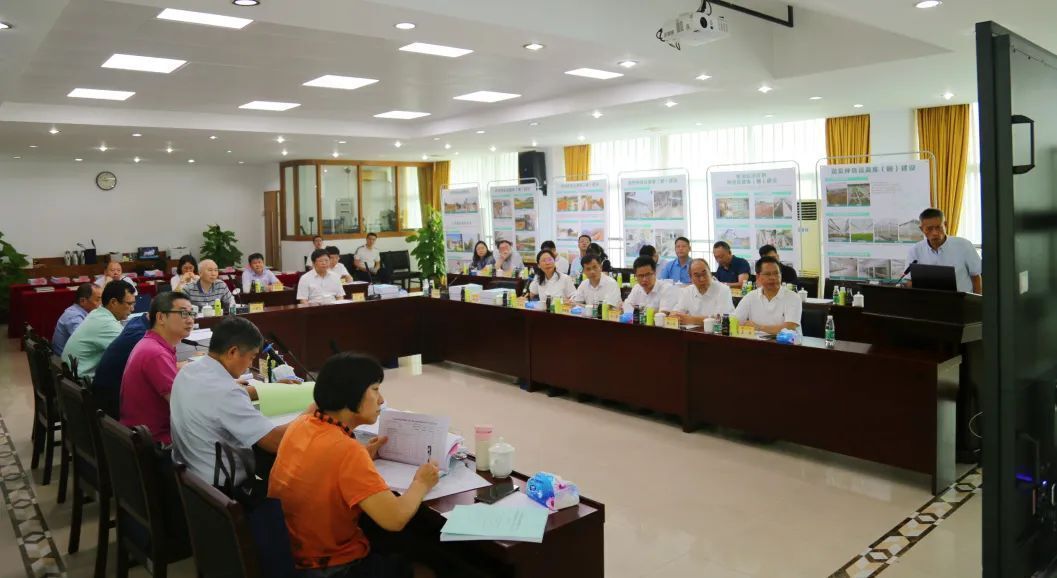Is it a villain role in foreign invasion species?
Author:China Popular Science Expo Time:2022.09.09
On the earth where humans survive, millions of creatures coexist with us, and they each start their wonderful life journey. When we were young, when we received external information, we often labeled things with the simplest "good" or "bad". Among them, invasive creatures are frequently labeled with "bad" labels.
So, what is invasive creature? Why is it vigilant for everyone? Let us go together today to unveil its mysterious veil!

Be wary
First, why is there a biological invasion?
Invasive creatures generally refer to foreign biological species that survive, reproduce, and successfully establish a local biological, ecosystem, economy, and security on the premise of survival, reproduce, and successfully establish their own population.
However, not all foreign species are invasive. The reasons for a biological species from the origin of the origin to the "New World" are also different, mainly the following three cases: (1) naturally introduced. Some of them landed through the movement of air, water or fish, insects, birds, and beasts. (2) Unintentional introduction. Following the trajectory of human activities and transportation, it has spread. (3) Interested introduction. The initial purpose is to be introduced to the local area with the purpose of improving the local ecological ornamental or economic benefits.
2. What are the adaptive strategies of biological invasion?
Just as human beings need to adjust and adapt to the new environment, foreign creatures also need to undergo local survival tests. During this period, the successful invasion of foreign species was introduced, fixed, lurking, diffusion, and outbreak. In the process of invasion, in order to cope with the living environment, their adaptive strategies are gradually upgrading, mainly divided into the following aspects:
Ecological adaptation. The historical countermeasures of biological life are an important manifestation of the environment in the process of evolution. After the invasion to the invasion, facing the choice of natural environment, from the beginning of the individual to the population, the maximum adaptation and optimization will be performed. In the process of adapting to evolution, the changes in the history of invasion species may be reflected in its body size, growth, behavior, reproduction, life, and resource utilization. It reveals the advantages and disadvantages of biological adaptation strategies.
Rapid evolution. After the invasion of invasion to the new ecological environment system, because of the lack of natural enemies, suitable climate, and less competition, it often shows better adaptability than in the origin. Therefore, it can grow rapidly. The reproductive system development cycle of the sex organs is shortened, the environment is higher than the environment.
Inter -breed interaction. The abundant biological diversity of invasion is guaranteed for the successful invasion of the invasion. The interaction between species can better help the invasion to adapt to the new environment and improve the conversion rate and utilization rate of resources.
Burspheleenchus xylophilus raging from North America to many countries in Asia and Europe has a very mature invasion strategy. In our country, the pine wirling found the Songmo Tianniu Monochamus Alternatus as the "best partner" -onor -media insect. After the pine modern bugs who were parasitic in the pine tree entered the sky cow's respiratory system, the sky bull gas tubular flora changed, nematodes and heaven and heaven. The adaptability of the beef is higher, and then the nematode wait for the cow to fly to other pine trees for eating or spawning, and then enter the new host. At the same time, itself secretes enzymes to resist the pine tree itself's erythene defensive substances for a new round of invasion.

Songki Tiansi larvae (picture source: Veer gallery)

The image of the pine wiring bug animation (Picture source: video "" The "murderer" in order to catch the dying of pine trees, this kind of beef was severely injured by mistake ")
This includes the interaction between animals, plants, and microorganisms, which makes the growth and development and reproduction efficiency of invasive seeds more efficient, and improves the plasticity of invasion in the invasion.
Genetic structure. After entering the invasion, the invasion species has more diversified genetic information in the process of adapting evolution, and genetic mutations have occurred, which greatly increases the abundance of its genetic material. The surviving parent who survived after the natural elimination of the invasive place stabilized the high -quality traits obtained by its mutation to the offspring, making the genetic structure of the invasive species different from the population of the origin of the origin.
Powers are plastic. With the evolution of the invasion species in the invasion, the total amount of genetic information contained in the genome is increased. The invasion of the same genotype may cause different phenotypes in different environments, and has a certain independent genetic basis. While increasing the possibility of the use of potential resources for the invasion, it also alleviates its choice pressure in the new environment, expanded the ecological amplitude of invasive creatures to a certain extent, and enhanced its invasion.
Therefore, after experiencing the test of the level, the survival adaptability of invasion of creatures has been greatly improved. It has strong ecological adaptability, strong phenotype plasticity, strong reproduction, and significant functional microorganisms and strong species. Or the characteristics of inter -hybrid ability. The invasive creatures gradually seize ecological resources through multiple adaptation strategies to expand the number of populations and achieve successful invasion.
3. How to prevent invasion of invasive creatures?
We may often hear the prevention and control strategy of "introducing natural enemies". There is no doubt that this is a relatively effective biological control measure, but it should be noted that before that, we need to introduce creatures for pre -risk recognition and potential risk assessment. Preventing the introduction of natural enemies may cause a new round of invasion storm. During the introduction process, strictly abide by the implementation of the "Management Guidelines for the introduction of natural enemies and biological prevention and control." At present, my country has a number of successful cases that have introduced natural enemies to prevent invasion. From the introduction of Australia Rodolia Cardinalis, at first, it was introduced from the introduction of coconia, coconutmal, and coconutrum. Can be controlled to a certain extent.
However, the prevention and control of biological invasion cannot be controlled or reduced on the source of the invasion of the invasion of the invasion. Control and governance. This includes a number of measures such as port quarantine, regional scope, sustainability prevention, and dynamic epidemic testing.
Due to the importance of national biology, ecology and food safety, on August 1, 2022, my country's first management measures for the prevention and control of foreign species "Administrative Measures for the Administration of Foreign Invasion" were officially implemented. Among them, it is more clearly proposed to strengthen the relevant education science science of the public and guide the entire people to participate in the actions that prevent and control according to law. It can be seen that we learn to identify the invasive creatures, and to respond to the local agricultural and forestry or quarantine departments after discovering, it seems extremely important. This can provide accurate information for professionals, but also facilitates them to take corresponding measures in a timely and effective centralized process.
Fourth, how can biological invasion make danger?
Over the years, the negative effects of biological invasion have been widely reported, mainly to threaten or destroy the biodiversity of indigenous land, cause degradation or collapse of the indigenous ecosystem, and directly or indirectly bring environmental economic losses. However, this is just a conclusion from the perspective of human interests. Species are developed into communities in continuous evolution, and gradually collaborate with other communities, and finally formed a variety of ecosystems.
Image source: veer gallery

Then, in the process of ecosystem formation, it is necessary to accompany the pressure of natural selection. The eliminated species that are eliminated during the establishment of this ecosystem may be retained in other ecosystems. In addition to the more extreme plunder invasion, the distribution of resources of the original ecosystem will also degenerate or collapse the ecosystem, just like the system upgrade needs to be patch to make up for the loopholes. Positive effect. It is mainly reflected in these aspects:
As food, feed or other products that provide economic value. For example, the hollow lotus seed grass Alternanthera Philoxeroides has been flooded in my country, but it has been developed as feeds of animals such as fish, horses, cows, and can be used as a drug. The cranfish Procambarus Clarkii has changed from the beginning of invasion species to become an important delicious food in Chinese food culture. The invasion can sometimes become a new economy after reasonable prevention and control and use.
"Supreme Soul" Curustral Lobster Picture Source: Veer Gallery

Fix or stabilize the ecological environment system. On Hawaii's Ahu Island, some non -local birds can replace the small seeds of individuals on the island because of small bird beaks. A headache Canada Solidago Canadensis L., because of its developed root system and strong moisture and nutrient absorption, can be used as specific protective plants in certain areas as specific prevention wind and sand.
A picture of a flower in Canada: Veer Gallery

Regulate and optimize the environment. The influence mechanism of invasive species on indigenous biological diversity is complicated and diverse. In addition to competing with local species, it may also bring a new micro -environment. After the invasion of Mikania Micratha, the surrounding microorganisms increased, which promoted the breathing effect of microorganisms and the use of carbon sources, reduced the output of CO2, and also facilitated the growth of Venom itself. After the invasion of foreign species, the new types of biological diversity formation played an important role in regulating the climate regulation and dust filtering of the environment.
Veon's white flower picture Source: Veer gallery

Formation of the cultural industry chain, with the value of leisure service. Lupinus Micranthus was originally introduced into Iceland as a green plant to protect Iceland's fragile vegetation and soil. However, because of its vitality is too tenacious, the reproduction is too fast, and then it grows up and spreads in Iceland, becoming an invasive species. Fortunately, Lu Binghua is mainly concentrated in the wilderness of the northern Iceland, and the overall impact is not great. At present, Lu Binghua has become an important tourism industry in Iceland with its excellent ornamental nature, attracting a large number of tourists to visit.
Lu Binghua pictures of the wild growth source: Veer gallery

Starting from the standpoint of human beings, invasion of biology does have great hidden dangers, but as far as the entire biological world is concerned, invasion of creatures is neutral.Studying species coexistence theory and model is necessary, it can facilitate the relationship between the interaction between invasion and indigenous species.Ecological feedback is dynamic, and the competition or coexistence between invasion and indigenous species also needs long -term monitoring and evaluation.In the context of complex biology, we need to respond positively on the series of problems caused by biological invasion, coordinate the relationship between economic development and biological invasion in order to achieve the sustainable development of the ecosystem.
Produced: Popular Science China
Author: Chen Junxian
Producer: China Science Popularization Expo
The China Science Popularization Expo is the Science Popular Science Platform of the Chinese Academy of Sciences. It is sponsored by the Computer Network Information Center of the Chinese Academy of Sciences. Relying on the high -end scientific resources of the Chinese Academy of Sciences, it is committed to spreading cutting -edge scientific knowledge and providing fun science and education services.

- END -
Zhang Hui: Carve the silicon electrode parts into "Daqian World" 丨 Struggler is youth

Science and Technology Daily Intern reporter Sun MingyuanThe outline of the parts ...
The most complete system of agricultural work quality resource protection library in South China is completed

Guarding the chip of agricultural agriculture to help the seed industry revitalize...